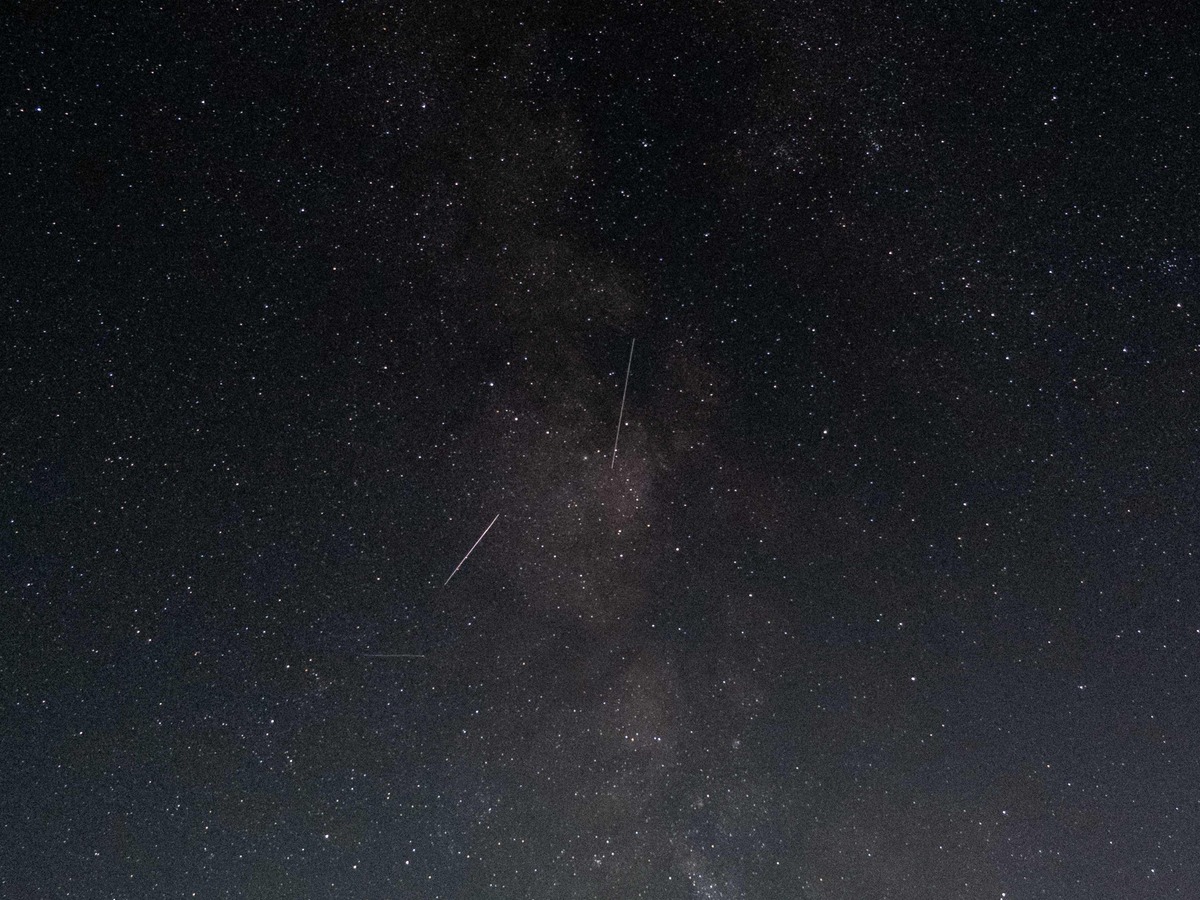
In the night sky of northern Lebanon, two meteors of the annual Orionid meteor shower streak as they cross through the Milky Way.
IBRAHIM CHALHOUB/AFP via Getty Images
hide caption
toggle caption
IBRAHIM CHALHOUB/AFP via Getty Images

In the night sky of northern Lebanon, two meteors of the annual Orionid meteor shower streak as they cross through the Milky Way.
IBRAHIM CHALHOUB/AFP via Getty Images
The Orionid meteor shower is upon us!
The event is known for the brightness and speed of its meteors. According to NASA, it’s one of the most beautiful meteor showers of the year. At its peak and under ideal conditions, the shower is expected to produce about 20 visible meteors per hour.
Where do the Orionid meteors come from?
The shower is named after the Orion constellation because the meteors appear to radiate from that point in the sky. In fact, its meteors are visible across the night sky.
The real source of the meteors is comet 1P/Halley, aka Halley’s Comet. When Earth’s atmosphere passes through Halley’s dust trail, the dust disintegrates and voila! A meteor appears.
Each October, Halley’s comet and Earth go through this same song and dance to create the Orionids. In that way, the Orionid meteor shower is a kind of like a treat to tide over Earthlings between full viewings of Halley’s comet, which only happens roughly every 76 years. (Fun fact: When this same sequence of events happens in May, the shower is called the Eta Aquarids.)
The Orionids are known to streak through the sky pretty quickly — about 66 kilometers, or 41 miles, per second! So they can leave glowing trains that can last anywhere from several seconds to minutes.
When — and how — to view the Orionids
The Orionids will peak this weekend in the wee hours between Oct. 20 and Oct. 21. So you can either stay up late Friday or wake up before dawn on Saturday to optimize the view.
Speaking of optimizing, NASA says that you can boost your chances of having a nice view by finding an observation spot away from city or street lights, if possible, and letting your eyes adjust to the darkness for about 30 minutes. Then, they recommend sitting or laying down with your feet facing southeast if you are in the Northern Hemisphere, or northeast if you are in the Southern Hemisphere. Lastly, NASA says to look away from the Orion constellation by 45 to 90 degrees. Looking directly at them as they appear to emerge from Orion will make the meteors look shorter and less spectacular.
(If you’re photographically inclined, NASA has tips for maximizing your meteor shower photo shoot.)
But, if you’d rather preserve your sleep, don’t worry: The shower will still be visible several days after the peak.
Have a cosmic question? Email us at shortwave@npr.org.
Listen to Short Wave on Spotify, Apple Podcasts and Google Podcasts.
This episode was produced by Berly McCoy and Kai McNamee. It was edited by Rebecca Ramirez, Christopher Intagliata and Viet Le. The fact checker was Anil Oza, and the audio engineer was Maggie Luthar.







